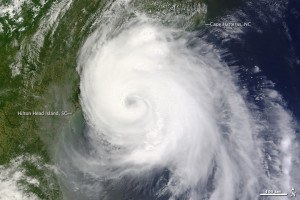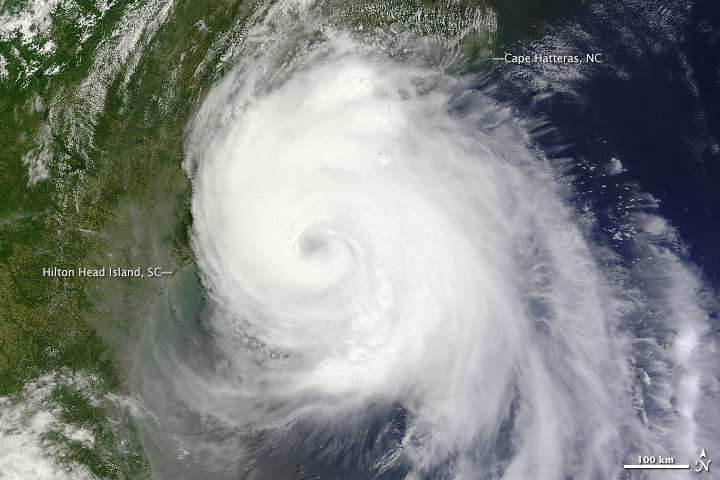RMS estimates that insured losses from Hurricane Arthur will not exceed $250 million from wind and coastal flooding. The expected loss covers damages to:
- Residential, commercial, industrial properties.
- Automobile and watercraft lines of business.
- Business interruption resulting from power outages or damage to property.
On July 3, Arthur made landfall along Shackleford Banks, between Cape Lookout and Beaufort at the southern end of North Carolina’s Outer Banks as a Category 2 hurricane on the Saffir Simpson Scale. The hurricane passed quickly over the Outer Banks of North Carolina and weakened to a Category 1 hurricane before tracking offshore of Massachusetts on the night of July 4. Arthur made a second landfall as a post-tropical storm in the Canadian Province of Nova Scotia.

“Arthur is the first hurricane to make landfall in the U.S. since Hurricane Sandy in 2012. What is unusual about Arthur, particularly for this time of year, is that it rapidly deepened to become a category 2 hurricane,” said Brian Owens, senior director, business solutions at RMS. “It’s also rare for hurricanes to form in early July, which climatologically is the quietest time of the hurricane season.”
Hurricane Arthur formed adjacent to Atlantic coastal Florida, a favored spot for early-season tropical storm development. Hurricanes that form in this location can easily move onshore to impact Florida, or can travel further up the coast to the Carolinas and the northeast U.S., as we saw with Arthur.
Inland flooding losses are expected to be a minimal proportion of the total insurance industry loss, as the areas affected are primarily residential. These losses will either be covered by the National Flood Insurance Program or will be excluded perils from many insurance policies. The RMS loss estimate does not include losses to the National Flood Insurance Program or inland flood loss. Post-event loss amplification is not expected to be a factor from Hurricane Arthur.
Approximately five percent of the estimated event loss is associated with coverage leakage. Coverage leakage is the escalation in claims severity for wind-only policies in circumstances where wind and water hazards coexist in residential lines of business.
North Carolina
In North Carolina the main driver of loss from Hurricane Arthur is from wind and coastal flooding. The storm impacted mostly residential properties. Residential insurance policies typically provide cover for surge-driven flood losses.
Northeast U.S. and Canadian Maritime Provinces
In Massachusetts and Nova Scotia, damage is mainly the result of localized inland flooding from the rainfall associated with Arthur. Damage from wind and coastal flooding in this area was found to be minimal.
The RMS estimate is based on hazard reconstructions of Arthur’s windfield and storm surge footprint, in addition to an analysis of the damage reports.
Source: RMS
Was this article valuable?
Here are more articles you may enjoy.


 Dog-Related Injury Claim Payouts Hit $1.12B in 2023, Report Shows
Dog-Related Injury Claim Payouts Hit $1.12B in 2023, Report Shows  Synopsys Sued by Private Equity Firm for Shopping $3 Billion Unit
Synopsys Sued by Private Equity Firm for Shopping $3 Billion Unit  Justice Department Preparing Ticketmaster Antitrust Lawsuit
Justice Department Preparing Ticketmaster Antitrust Lawsuit  EVs Head for Junkyard as Mechanic Shortage Inflates Repair Costs
EVs Head for Junkyard as Mechanic Shortage Inflates Repair Costs 